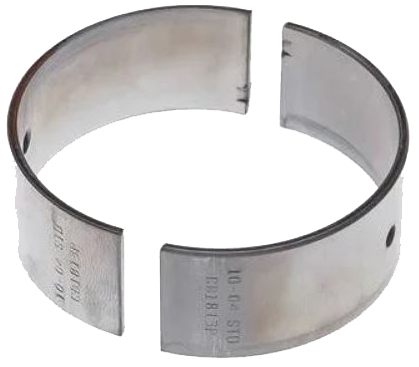The connecting rod in the engine is a fundamental component of internal combustion engines, linking the piston to the crankshaft. It plays a vital role in converting the linear motion of the piston into the rotational motion needed to drive your vehicle. Without the connecting rod, engines simply wouldn’t function.
Whether you’re looking into high-performance cars like the KIA EV5 FWD or family-friendly options such as the KIA Carnival Executive, understanding how an engine’s internal components work, especially the connecting rod, can help you appreciate the technology behind every drive.
Connecting Rod in the Engine Function
The primary function of a connecting rod in an engine is to transfer the force from the piston (due to combustion) to the crankshaft. As the piston moves up and down inside the cylinder, the connecting rod turns this vertical motion into a rotational force that drives the crankshaft—and eventually your wheels.
 This essential link ensures the engine can produce and transmit power efficiently, making it a cornerstone of engine mechanics in vehicles like the KIA Sportage Alpha and KIA Sportage L.
This essential link ensures the engine can produce and transmit power efficiently, making it a cornerstone of engine mechanics in vehicles like the KIA Sportage Alpha and KIA Sportage L.
Connecting Rod Parts and Functions
A typical connecting rod consists of the following parts:
-
Small End: Connects to the piston pin.
-
Big End: Attaches to the crankshaft journal.
-
Rod Shaft: Transfers force between both ends.
-
Bearing Inserts: Facilitate smooth rotation and reduce friction.
-
Bolts and Nuts: Hold the rod cap and body together.
Types of Connecting Rods in the Engine
 There are 4 types of connecting rods commonly used in engines:
There are 4 types of connecting rods commonly used in engines:
-
I-Beam Connecting Rod
Common in most passenger vehicles like the KIA Sportage HEV. Strong and lightweight. -
H-Beam Connecting Rod
Built for high-performance and racing engines. -
Forged Rods
Made by shaping heated metal under pressure. Durable and used in heavy-duty engines. -
Cast Rods
Manufactured through casting, lighter duty compared to forged types.
These designs affect the overall durability and performance, especially under stress.
Connecting Rod Material
Connecting rods are typically made from:
-
Steel Alloys – High strength and cost-effective.
-
Aluminum Alloys – Lightweight for high-speed applications.
-
Titanium – Used in high-performance racing cars.
-
Cast Iron – Economical but lower in strength.
Materials differ based on the engine design, like those found in models such as the KIA Stonic EX Plus.
Connecting Rod Bearing
The connecting rod bearing sits at the big end and provides a smooth interface between the rod and crankshaft. It plays a critical role in reducing friction, wear, and ensuring longevity. Poor maintenance can lead to early bearing wear and engine failure.
 If you’re maintaining your car with services like Undercoating Protection or 3M Glass Coating, don’t overlook internal components like the connecting rod bearing.
If you’re maintaining your car with services like Undercoating Protection or 3M Glass Coating, don’t overlook internal components like the connecting rod bearing.
Connecting Rod in Engine Diagram
 Though this article doesn’t include visual diagrams, you can easily understand the flow: Piston → Piston Pin → Small End of Connecting Rod → Rod Shaft → Big End → Crankshaft Journal.
Though this article doesn’t include visual diagrams, you can easily understand the flow: Piston → Piston Pin → Small End of Connecting Rod → Rod Shaft → Big End → Crankshaft Journal.
This structure works in harmony with every combustion cycle.
Piston Rod and Connecting Rod
The piston rod is often confused with the connecting rod. The piston rod connects the piston to the connecting rod in some mechanical systems. However, in most vehicle engines, the connecting rod directly links the piston to the crankshaft.
Engine Servicing
Want to keep your engine in optimal shape? Regular maintenance is key. Use the Online Service Appointment Form or submit an Online Inquiry to stay ahead.
Also, refer to the KIA Price List if you’re considering models with cutting-edge engine designs.
FAQs
Q1: What are the two functions of the connecting rod?
A: It transmits force from the piston to the crankshaft and converts linear piston motion into rotational motion.
Q2: What is the function of the connecting rod bearing?
A: It reduces friction between the connecting rod and crankshaft, enabling smooth rotation.
Q3: What is the main function of the connecting rod in an IC engine?
A: It links the piston to the crankshaft, converting combustion energy into usable mechanical energy.
Q4: How to use a connecting rod?
A: Connecting rods are installed during engine assembly and require precision fitting, alignment, and lubrication.
Q5: What is the main purpose of the connecting rod?
A: To transfer motion and power between the piston and crankshaft.
Q6: What are the symptoms of a bad connecting rod bearing?
A: Knocking sounds, reduced oil pressure, engine misfire, or metal shavings in the oil.
Q7: What causes connecting rod failure?
A: Poor lubrication, over-revving the engine, manufacturing defects, or prolonged high-load conditions.
Q8: What is one of the first signs of bearing failure?
A: A low-pitched knocking or rattling sound from the engine, especially under acceleration.
Q9: Can you drive with a bad connecting rod bearing?
A: It’s highly discouraged. Continuing to drive can cause severe engine damage or total engine failure.
Q10: How often should connecting rod bearings be inspected?
A: During major engine overhauls or if symptoms like knocking sounds or oil pressure drops occur.
Q11: Are connecting rods replaceable?
A: Yes, but it involves a detailed engine disassembly process and should be done by professionals.
Q12: Do connecting rods vary by car type?
A: Yes, performance and build quality vary between models like the KIA EV5 FWD and Sportage FWD.
Conclusion
The connecting rod in an engine may be hidden deep inside the engine block, but it’s one of the most vital parts responsible for your vehicle’s movement. Knowing the types of connecting rods in the engine, their materials, function, and how to recognize failure can save you thousands in repairs and ensure longer engine life.
Whether you’re driving a powerful SUV like the KIA Sportage HEV or a luxury van like the KIA Carnival Executive, the connecting rod plays a silent but powerful role in every journey.













